Badami and thereabouts was in our list of places to see, for almost 6 years. I had happened to read a couple of intriguing anecdotes about this place – it is a “cradle of temple architecture”, and “a temple laboratory”. We had seen photos and mentions of Badami, Pattadakal, and Aihole in tourism brochures, and other material.
Badami, Aihole, and Pattadakal were part of the Early Chalukya kingdom, and served as their administrative centers at various points in time. The Chalukyas created innovations in engineering, and art, while building their beautiful temples, and rock-cut caves. All this way back in the 6th century CE. Almost 1500 years ago. George Michell’s book on Badami-Aihole-Pattadakal, is a good primer to appreciate the significance of the Chalukyas, and their temples.
While scanning through the holiday calendar, we noticed that 9th to 12 August is good time to go, because of school holidays. Looked up train tickets – plenty available – and also called up a couple of resorts at Badami – and they had rooms available. So, we sat on it.
A couple of weeks before our proposed travel, we were gently prodded into action by a couple of friends; quickly booked the train tickets, and lodging at the Heritage Resort.
Planning seemed too easy.
And then the rains started on the Western Ghats.
And this was no ordinary rain; it was a deluge of gigantic proportions. All the rivers were in spate – all the major towns and cities along the ghats were either submerged wholly, or partially. We placed a few calls to the resort to check the situation in Badami, and thereabouts. The answer was “Badami hasn’t had a bout of rain in 5 years. It is raining in other regions, but not in Badami. And there is nothing to be concerned about”.
Decided to proceed with the vacation. The excitement of an overnight train journey, visiting a new place, and seeing new things was heady for N. Her excitement rubbed off on us, and we looked forward to an uneventful, and enjoyable trip to Badami.
Woke up before day-break, and the train was expected to pull into Badami in the next hour or so. Standing at the open door, of the compartment, with the fresh, cool wind rushing onto my face woke me up fully. Noticed the rising sun, and brightening sky illuminating the scene outside; fields stretching to the horizon on both sides of the rail track; the tilled fields covered in soil black, volcanic, and fertile. Moments like this make the travel memorable.

Soon the train approached the train station, at the village of Holay-alooru. The scene outside was one of devastation – the entire village was submerged. All the residents, and their livestock were living on the rail platform. The rail tracks and platform being the highest point all around.
The waters, churning, and brown with silt stretched as far as the eye could see. The rather timid Malaprabha river was now a sea of brown. The deluge in the ghats, having overwhelmed the river dams en-route, had resulted in floods. One of which we were witnessing, aghast.
The train puled out of the station, and ascended a gradient towards Badami. We hoped the misery of the displaced people of Holayalooru ends soon.
Approaching Badami, one notices the reddish-sandstone hills and cliffs in parallel to the train tracks. These hills, and their sandstone rock were used to create the architectural masterpieces of the Chalukyas. We looked forward to seeing them.
A quick auto-ride deposited us at the resort. The property is well maintained, and pleasingly landscaped. There was a lot of bird life in and around the property – we spotted munias, weaver birds, bulbuls etc. A good place to do arm-chair bird-watching.

Quickly freshened up, and fortified ourselves with tasty breakfast – typical idli-vada-kharabath fare. And then, we retired to our room, and promptly fell asleep. Always a good way to start a vacation, methinks. N refused to follow suit, and our guess is she wandered around the property, read a book or two, and generally idled away.
Woke up around noon; decided to head to Badami caves area for the day, and get lunch somewhere in the town. We decided to walk it to the caves, from our resort – was around 2.5km away, and the weather was perfect for a walk. The intent being to get to know the place, while on foot – usually the best way to get to know a place.
The walk to the caves started pleasantly enough. Spotted quite a few birds sitting on the electric wires – laughing-doves, drongos, munias, etc.
As we neared town, the filth hit us – metaphorically speaking, ofcourse. The road was littered with all kinds of sachets, papers, plastics of consumer brands, and detritus of organic matter. The town had gone to the pigs; literally speaking. Pigs had a run of the place. The town was shabby, and run-down. I had heard that north Karnataka is considered to be untouched by “development” – I imagined a quaint place. The reality was that this is a place that any form of human development, that the south Karnataka has seen, has overlooked.
This is all the more tragic, considering that this part of the state is and was the center of cultural development, social movements, is over-run by heritage and ancient monuments. The landscape is that of nutrient rich black soil, and bordered by several rivers, and is dotted with natural springs.
Initial impressions of Badami left us pensive, subdued, and struggling with thoughts of what it takes to improve a peoples lives.
Will pause this for now, and get back to the touristy experiences.
We walked into “Geetha Darshini” for some hot-idlis and dosays. Food was ok. Nothing much to write about. A persistent auto-driver, and our reluctance to walk to the monuments saw us quickly transported to the Badami caves. The narrow road leading to the caves is best traversed in a vehicle.
We listlessly got out of the auto, and headed to the ticket counter to purchase the entrance tickets to the caves.
But one look at the sandstone cliffs, and the sight of Cave 1 reminded us why we were here.
The setting is magnificent!
Cave 1
We ran up the steps to Cave 1. There are 4 main caves in these hills, and some lesser known caves too. These cave temples are from the 6th to 7th century CE. Apparently a new one was discovered as recently as year 2013. The 4 caves in this hill side are man-made – it is literally scooping out tonnes of rock, and in the process leave behind enough rock to create fantastic sculptures on. There is little or no margin for error while creating the sculptures – a deformity here, or a sizeable chunk of it falls off, then is the site abandoned? Am not sure how the sculptors compensated for it. Did they dig through more rock to create a sculpture afresh? What about the fine work on the pillars – one can’t abandon a pillar. This combination of engineering, and artistry is breath-taking.
The sculptures at the entrance of the caves are at least 8ft tall.


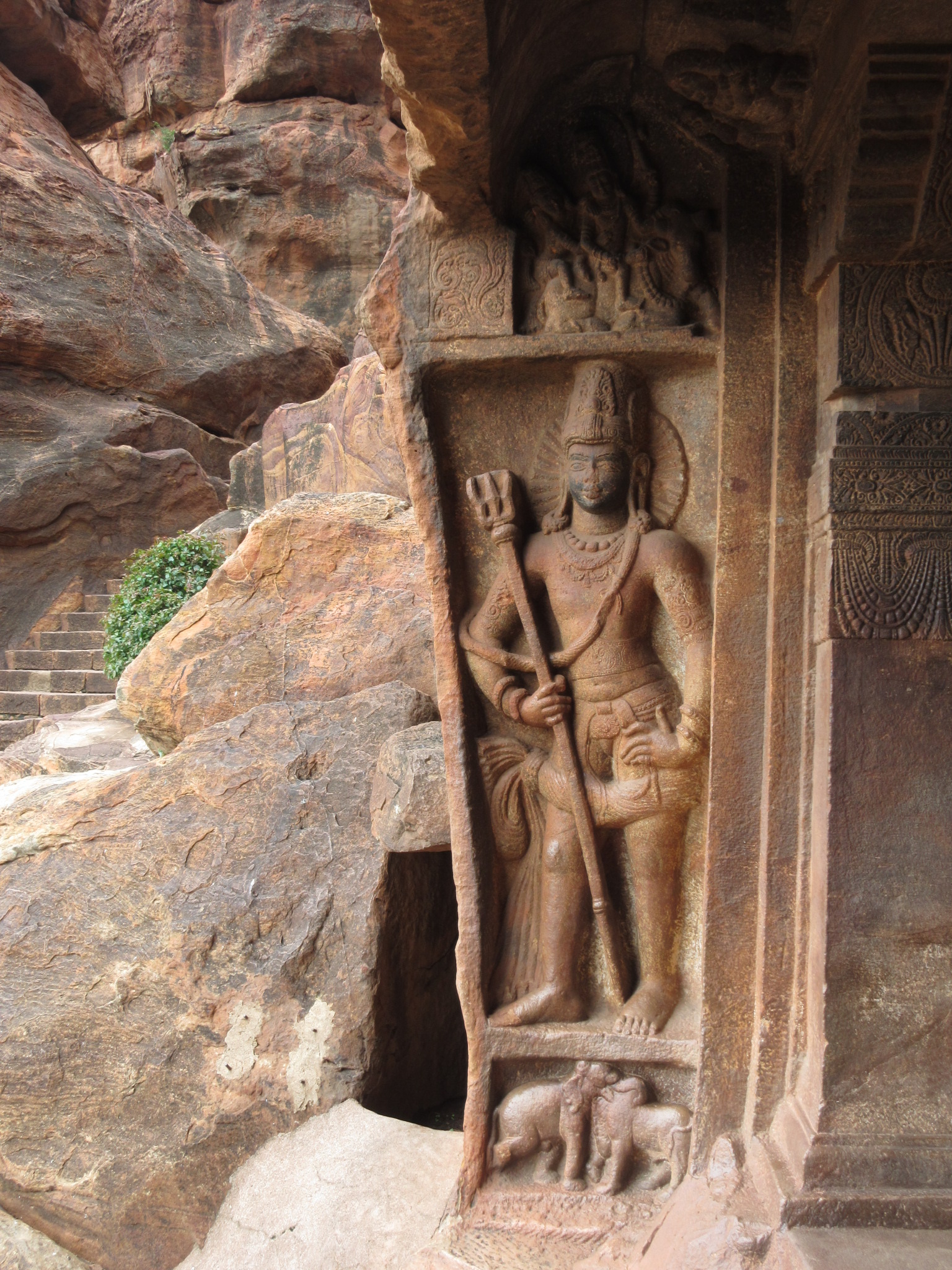
Cave 1 entrance, on the left side 
carved on the ceiling 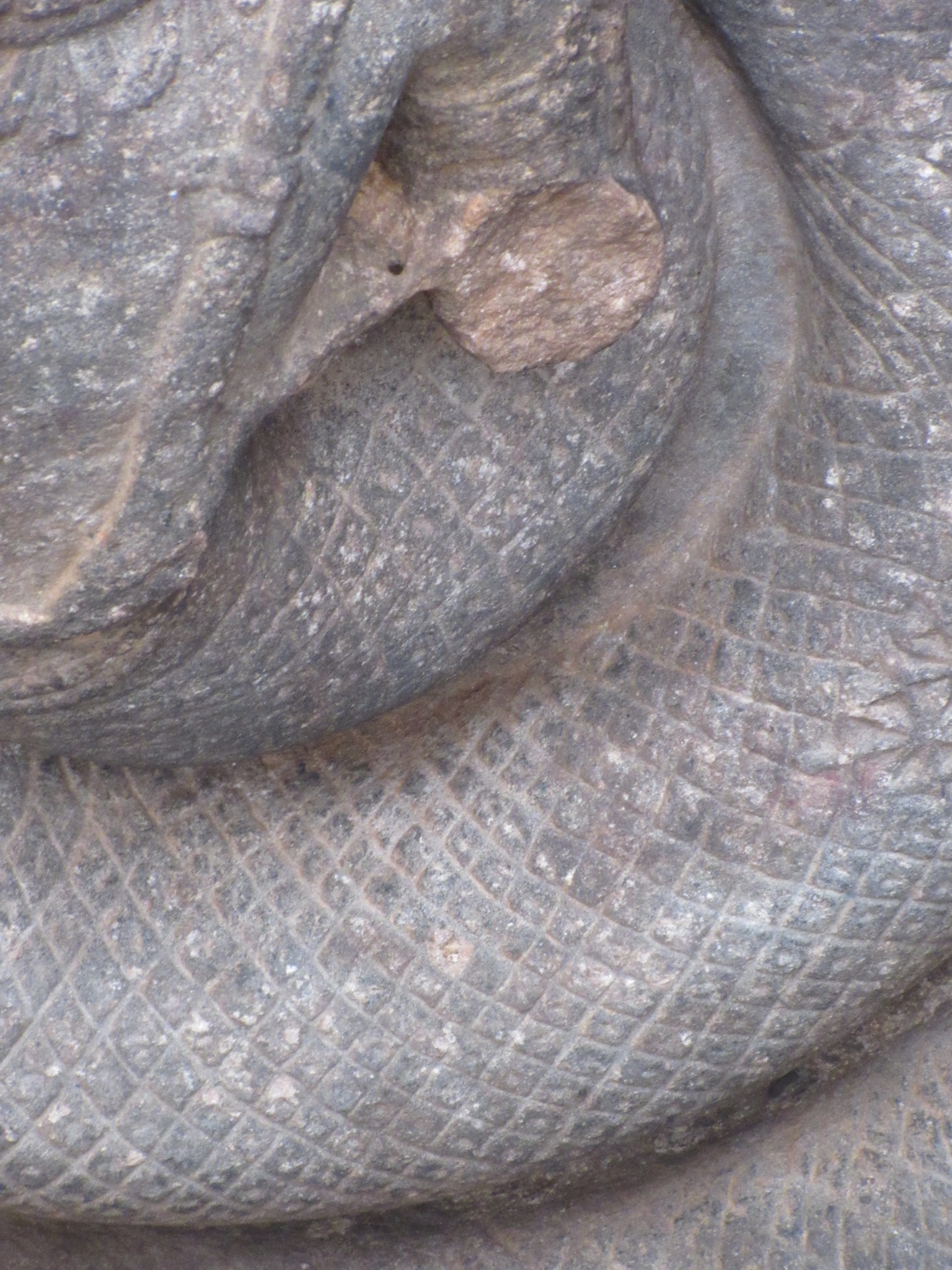
a closeup of the ceiling sculpture – the scales of the snake 
The ear-ring falls realistically, because of the way her head is tilted.
The aesthetics of Cave 1 left us spellbound. More about Cave 1 here.
Cave 2
Onward to Cave 2 – requires a climb of steps to get there. Lots of climbing required. Cave 2 is dedicated to Vishnu. Slightly smaller in size than Cave 1. Some of the pillar, and roof carvings here were beautifully executed.
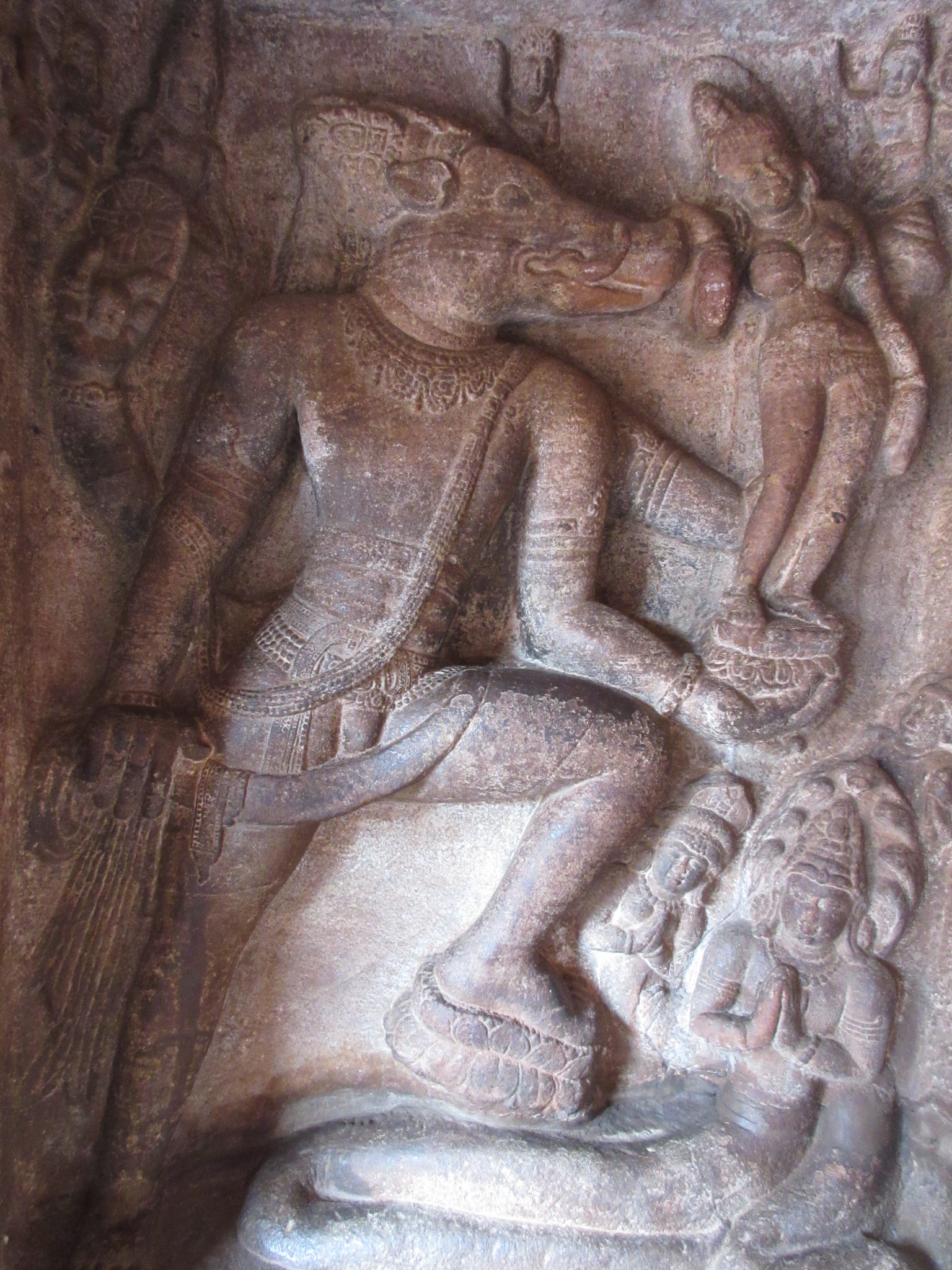
Varaha -the dynamism of movement is captured wonderfully her 
Interconnected Swastikas, on the ceiling 
The symmetry of this pillar carving is aesthetically pleasing 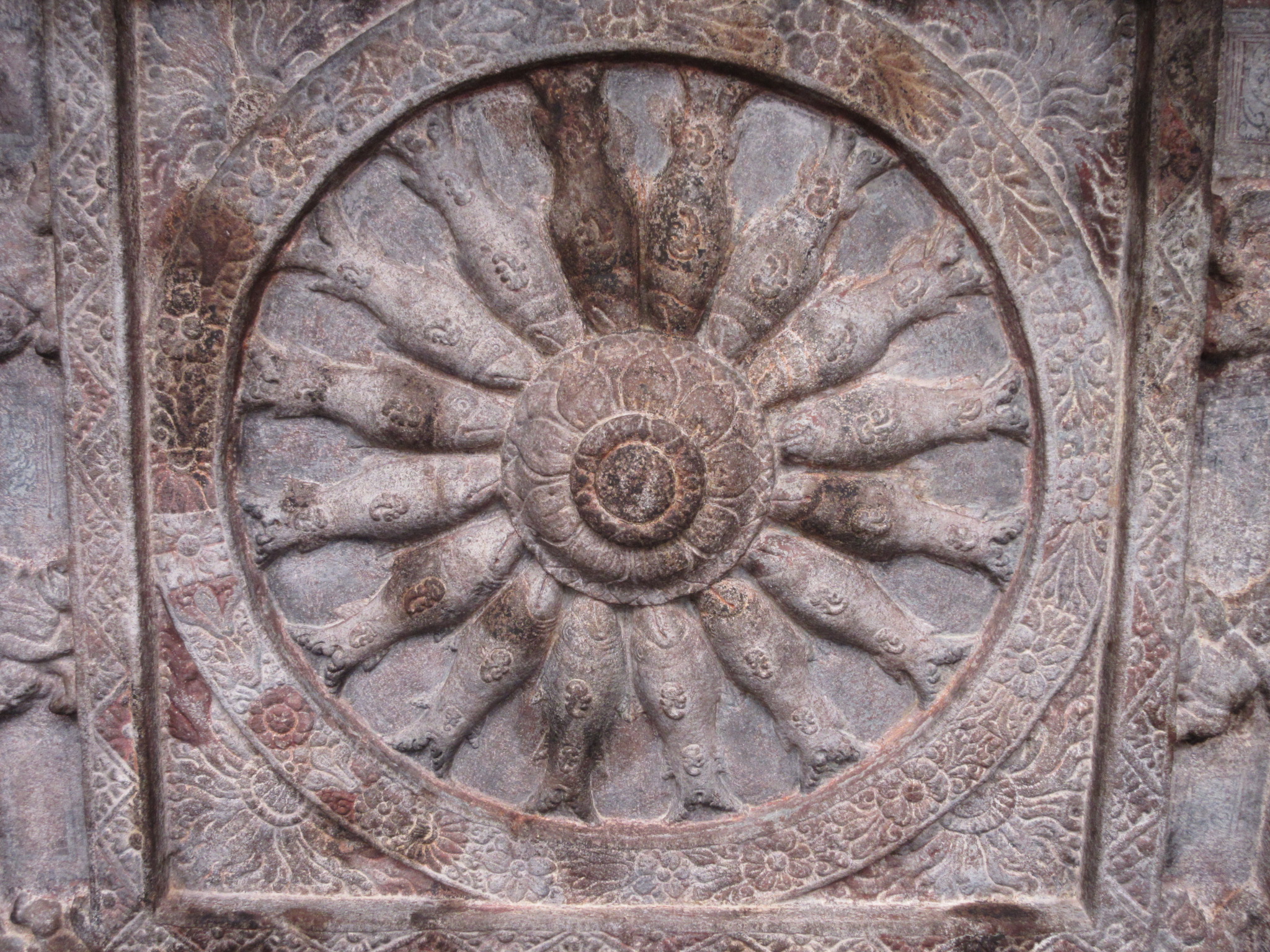
Wheel with fishes as spokes – carving on the ceiling
More reading material, about Cave 2 is here
Cave 3
This is the biggest cave, in this series. It is also richly sculptured. This cave has been accurately dated, thanks to an inscription in the cave. It is the oldest accurately dated cave temple in India. 578 CE. The sophistication of the clothing, accessories on the sculpted icons provides a glimpse into the rich culture of the time.
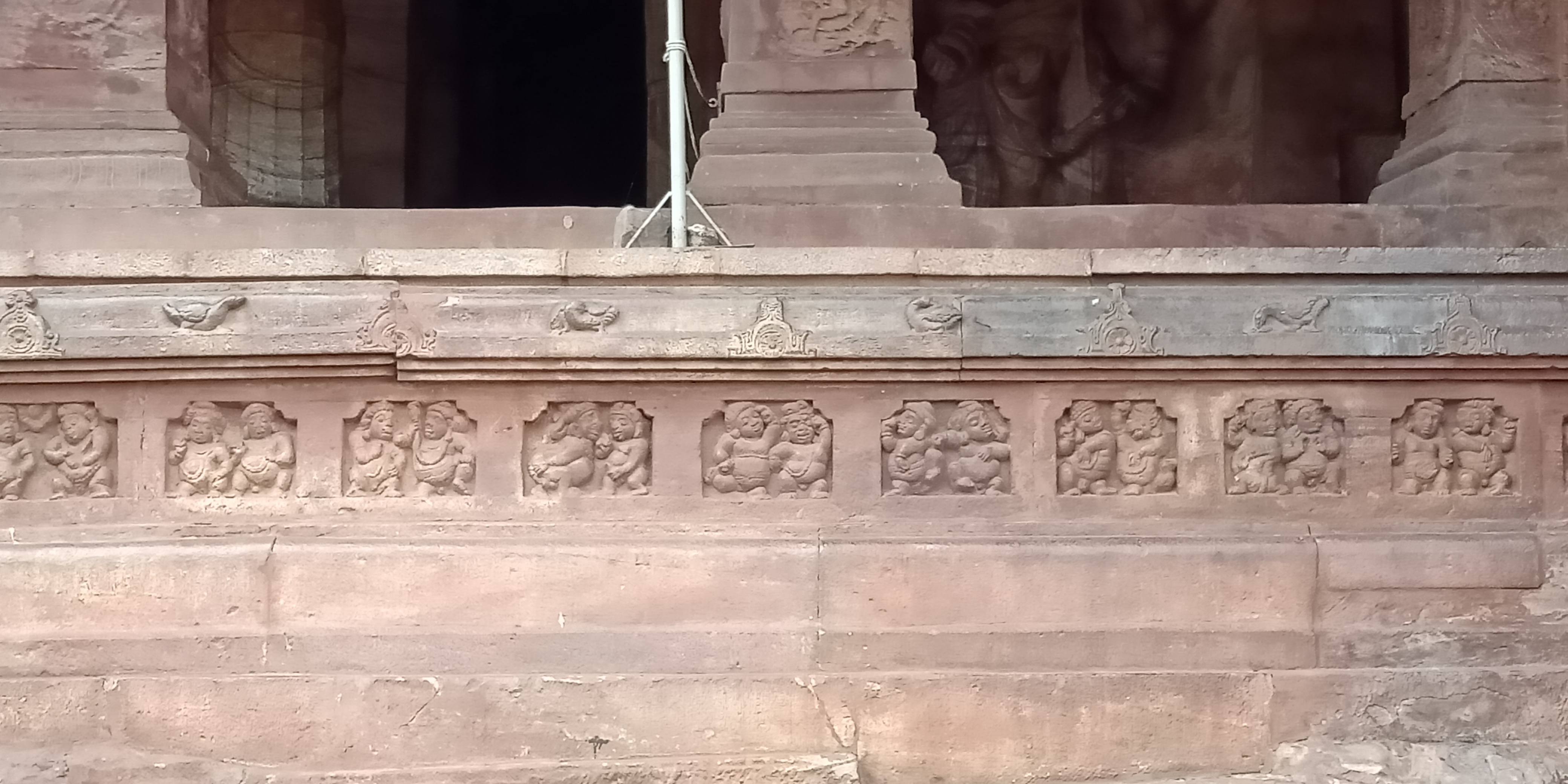
Playful ‘Ganas’ at the base of the cave entrance 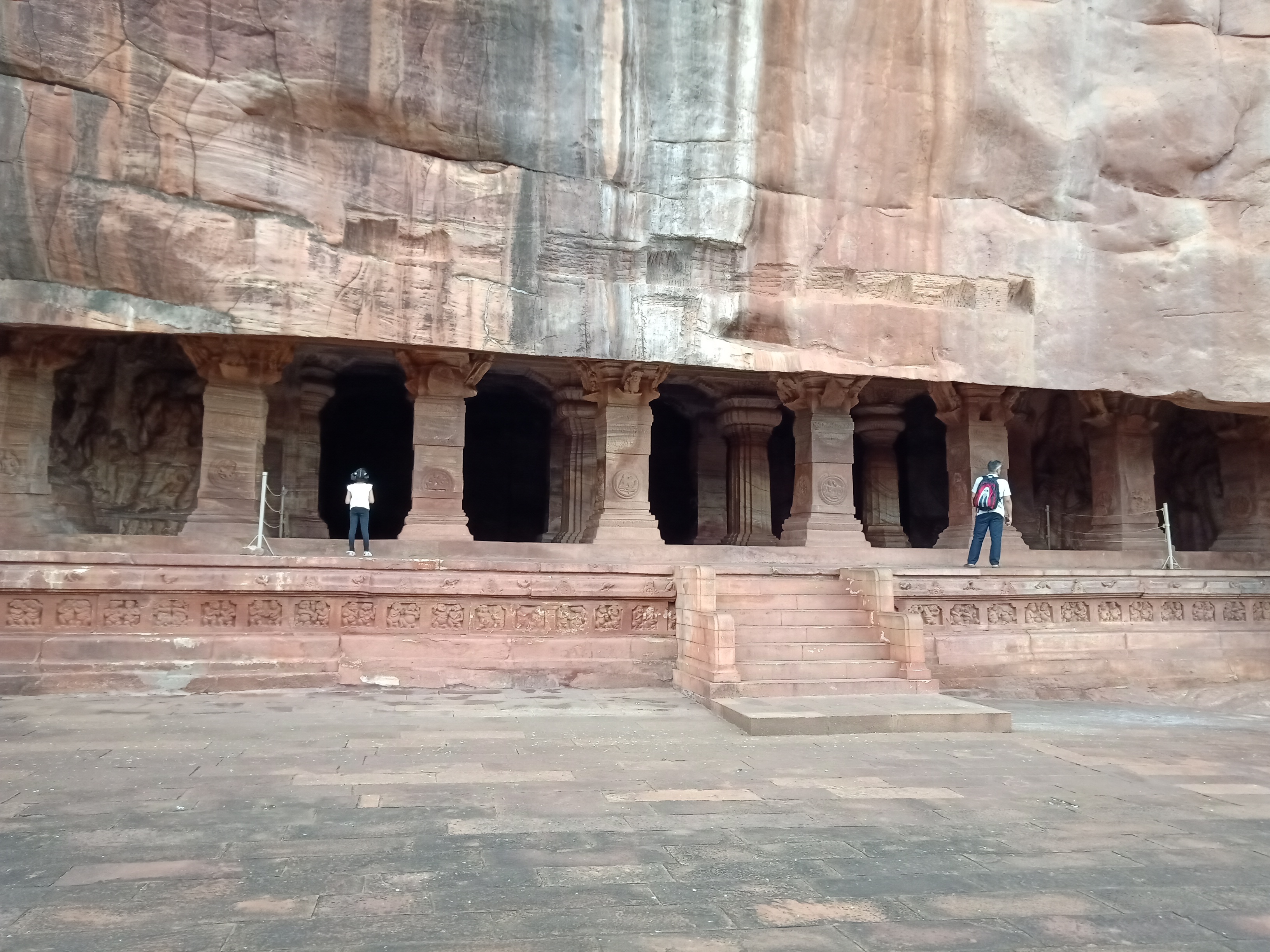
Huge imposing entrance to the cave 
Vishnu seated on Sesha, the serpent 
Panorama shot of Cave 3, to Cave 4
More details on the significance of Cave 3 is here.
Cave 4 is dedicated to Jaina Thirtankaras. We didn’t spend too much time inside here. Took a brief look, but spent a lot more time taking in the sights from this height – the lake, the temples around it, and the structures on the cliff on the opposite side. Beautiful view, and very picturesque.
Our next stop was to take a look at the fort on the opposite cliff.
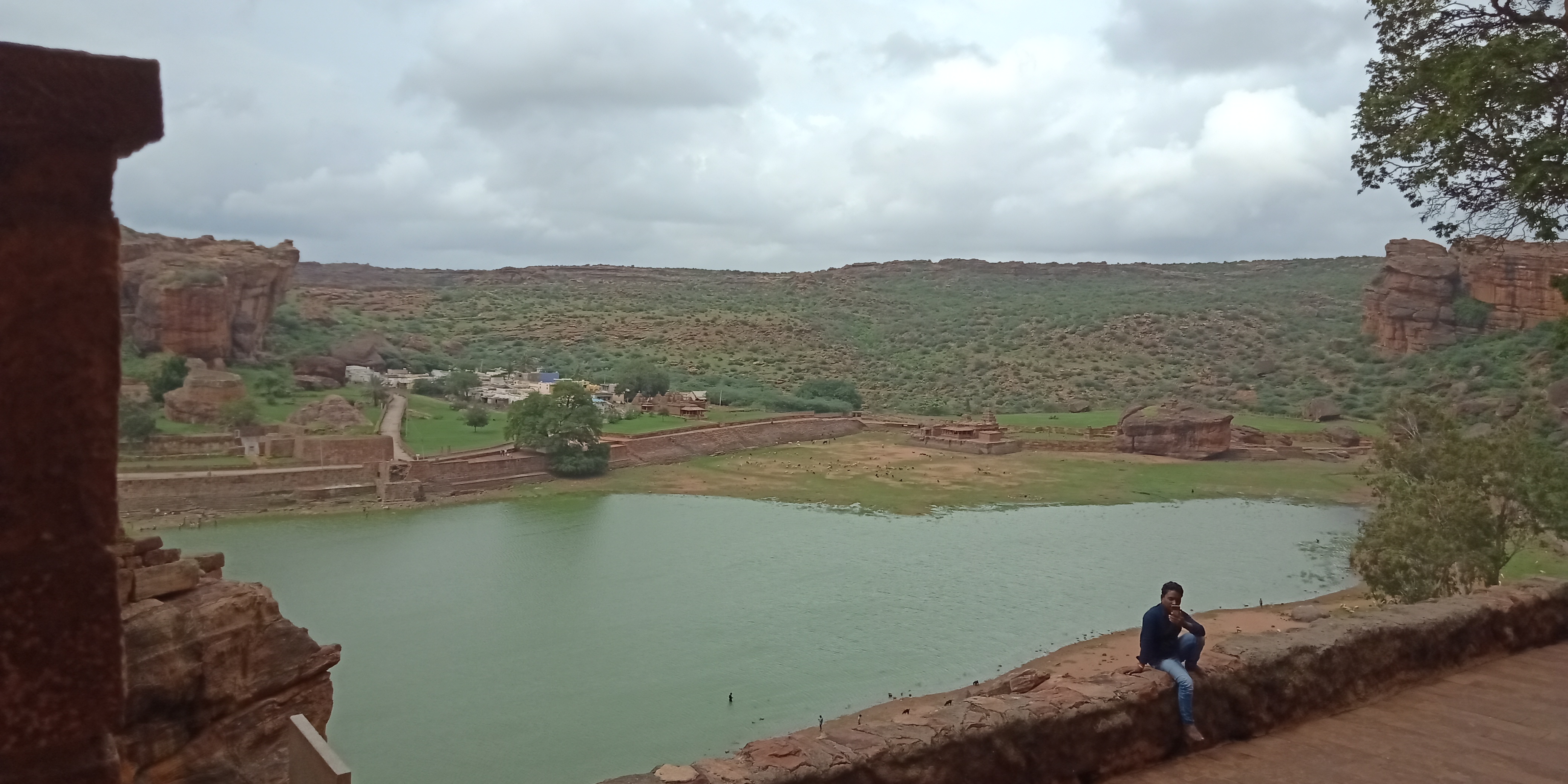
After resting for a while, we descended towards the lake. There is a wonderfully structured tomb from the Adil Shahi period (17th century CE ) on the bank.

Walked along the steps, on the lake’s bank, and reached the Yellama temple. This temple’s inscription dates it to 1139 CE.

This is a beautiful temple, with a very aesthetic shikhara. Doesn’t contain idols of gods, or mythical figures. The fluted lower walls, and layered shikhara, though simple looking, are beautiful to see in person.
The trip details continue in Part 2 – with some details of the North Fort, Bhuthnatha temples, Mahakuta, and Banashankari temples.